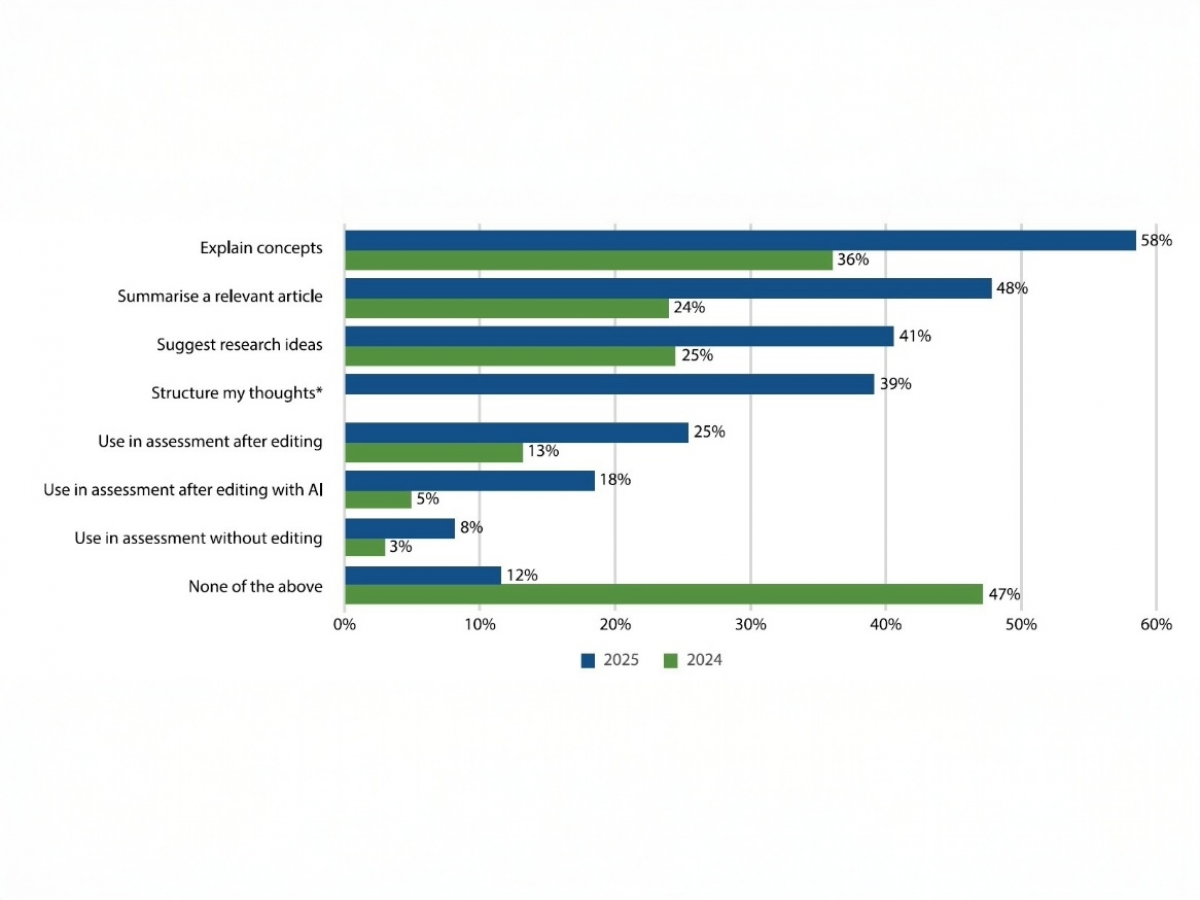With AI, students are heading upstream—we need to meet them there.

When generative AI arrived with ChatGPT in late 2022, its perceived threat to education was, in hindsight, quite simple: its ability to create authentic-looking text disrupted what we previously thought were robust assessment methods.
But two-and-a-half years on, gen AI capabilities have expanded far beyond text generation, and students are now using these tools in far more sophisticated and strategic ways.
We know that most students are ‘using’ AI, but what does that really mean?
Student AI use is headed upstream
Research is describing what I call ‘upstream’ academic AI use. Students are using AI to explain concepts, summarise articles, and suggest research ideas. Some of these practices are occurring as learning tasks, and some are occurring early in the assessment workflow, though not necessarily in the completion of the actual assessment artefacts.

A 2025 survey of more than 1,000 undergraduate students reveals they're increasingly using gen AI to help explain concepts, summarise relevant research articles, and suggest research ideas (Freeman, 2025, Figure 2, p3).
Most of these techniques simply weren’t possible with earlier versions of gen AI tools and have been enabled by developments in AI technology over the last year. Current gen AI tools can now:
- function as a search engine to access recently published web content, where earlier versions were limited by when their training dataset was compiled.
- analyse information from documents uploaded by the user, where earlier versions could only accept limited amounts of text via a chat window.
- work across different information formats (audio, images, video and text), where earlier versions were text only.
The ability of the most recent gen AI models to analyse huge amounts of provided written information—hundreds of academic papers at a time—has perhaps been overlooked on university campuses. We’ve been so focused on the impacts of AI-for-writing that we risk underestimating how AI-for-reading is now affecting scholarship. (One of Australia’s leading machine learning scientists, Professor Liming Zhu, recently gave a presentation to 1,600 public servants on how his deep AI integration workflow allows him to now ‘digest’ more than 2,000 academic papers a year!).
What does this mean for teaching?
Most students are now using generative AI, and much of that use is upstream—exploratory, idea-generating, and woven into their learning process. We need to meet them there. Educators play a leading role in guiding their students toward responsible AI use that supports academic skill development aligned to the AI Literacy Framework.
The University’s AI in Assessment Guidelines are a practical starting point for framing open, forward-looking conversations with students. They’re designed to help course coordinators think through when and how AI might enhance student learning, and how to clearly communicate those expectations to students. In 2025, choosing “no AI” by default may not just be impractical, it risks sidelining the kinds of exploratory engagement that can build AI literacy.
If students are heading upstream with AI, our teaching practices should at least wade in after them.
References
Freeman, J. (2025) Student Generative AI Survey 2025. HEPI Policy Note 61. Oxford: Higher Education Policy Institute. Available at: https://www.hepi.ac.uk/wp-content/uploads/2025/02/HEPI-Policy-Note-61-2.pdf (Accessed: 14 May 2025).
Mulford, D. (2025) ‘AI in Higher Education: A Meta Summary of Recent Surveys of Students and Faculty’, Campbell Academic Technology Services, 6 March. Available at: https://sites.campbell.edu/academictechnology/2025/03/06/ai-in-higher-education-a-summary-of-recent-surveys-of-students-and-faculty/
Before using any gen AI software tools, University of Adelaide staff should understand the ITDS Generative AI IT Security Guidelines and ensure they maintain information security and data privacy.
If you’re encouraging students to use gen AI tools in their studies, be mindful of how varying levels of access to software (including paid subscriptions) might impact education equity among diverse student cohorts.
Feel free to encourage your students to check out the University Library’s Guide for using AI for study and research in an ethical, responsible and evaluative way.
Further support materials can be found on the AI and Learning website (staff login required).
